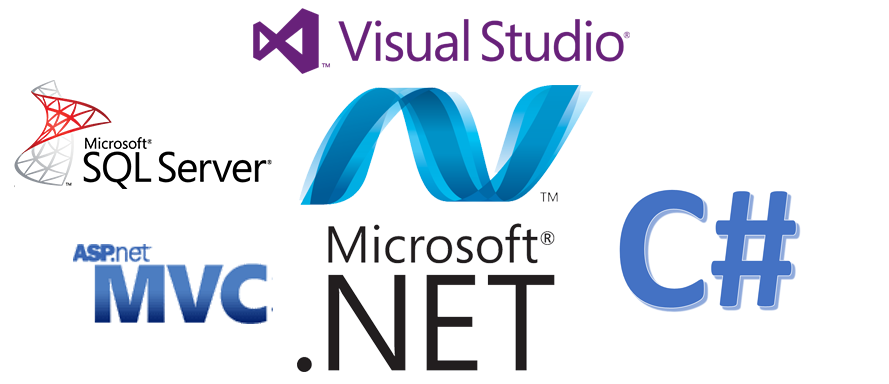SUMMARY
Our .NET Online course objective is to get familiarize with Microsoft.Net, C#, ADO.NET and ASP.NET technologies. The .Net online training course is designed to understand the different concepts and features of .NET coding, debugging and developing of Windows and web applications. The advanced learner can opt for advanced ASP.Net Modules.
ELIGIBILITY
To apply for this program, you should have cleared 12th class
COURSE STRUCTURE
Introduction/Overview of .Net
- Introduction to .Net
- Platform for the .Net
- Drawbacks of Current Trend
- Net Framework – BCL & CLR l Key design goals
- CLR, CTS, MSIL & other tools.
- Multiple Language Interaction & support l Moving from Project to Assemblies…
- Security in .NET – CAS
.Net Framework [Advanced]
- Advantages/Disadvantages
- Features of .Net
- Assemblies in Detail
- GAC, Strong Names
- Language Interop
- Reflection
Visual C#.Net Language
- Advantages/Disadvantages
- Why C#/ Why Not C#
- Where does C# Fit in
- C, C++ to Visual C#
- Features of C#
- .NET Namespaces
.Net Installations/C#.Net
- .NET Versions – 1.1/2.0/3.0/3.5 Beta
- Visual Studio.NET 2003/2005/Orcas/2008
- Windows Vista – New Look
- Gadgets/SideBars/UAC – relation with .NET
- Hardware/Software Requirements
- FAQ’s with detailed answers
Programming Using Visual C#.Net
- The start of the application
- C#.Net Program Design
- Variables and types
- Value types and reference types (CTS)
- Strings and arrays
- The Console class
- String formatting
- Statements and flows
- Programming Structures
- Command-line arguments
- VS.NET to Create C#.NET Apps
- C# 3.0/3.5 features – Implicit types , Extention Methods and more
Introduction To Windows Forms – I
- Windows forms library – WinForms
- Layout Enhancements
- Forms and controls – Hierarchy
- Creating simple GUI by hand
- Event handling
- Basic controls
- Windows forms – buttons, check boxes, radio buttons, panels, group boxes, list boxes, picture boxes…
Windows Forms – II
- Menus
- Built-in dialog boxes and printing
- Extender Controls
- ToolStrips, StatusStrips and progress bars
- A new MDI forms strategy
- Inheritance with forms
- New Controls – Web Browser, Property Grid etc
Object Oriented Concepts (Basic)
- Classes & objects
- Abstract & override methods
- Creating and using your own classes l Data members and member methods l Instantiate an object
- This keyword
- Properties – Read Only Write Only…
- Build process using windows class library l Generate classes for other clients
- How to use classes as part of project
Object Oriented Concepts (Advanced)
- Accessibility levels, specifiers
- Constructors
- Method overloading
- Class (static) variables & methods
- Object destruction
- ‘ref’ and ‘out’ parameters
- Constant values
- Enumerations
- Inheritance and Polymorphism
- The root of all classes
- Creating derived classes
- Method overriding and hiding
- Polymorphism and virtual functions
- Casting objects
- Abstract classes
- Sealed classes
- Static classes
Object Oriented Concepts (Implementation Oriented)
- Case Studies
- Class Diagram in VS.Net
- Refactoring & others
- FAQ’s
Error Handling
- Unstructured error handling support
- Structured error handling
- Error categories
- Debugging the application
- Debug and Trace classes
- Code Optimization
- Testing and strategies
Ado.Net 1.1/2.0/LINQ
- History and background
- From DAO to ADO.NET
- ADO.NET LINQ
- ADO.NET design goals
- The ADO.NET architecture and its components
- ADO.NET in relation to the other .NET tools
- DataSet in RealTime Scenarious
ADO.Net Components
- Connected and disconnected environment
- ADO.NET object model
- Data sources, providers and connections
- Commands and data readers
- Data sets and data adaptors
- Data tables, rows and columns
- Constraints and relations
- Data-centric applications – New ADO.Net Hierarchy
Data Sources And .Net Data Providers
- Connecting to a data source
- SQL Server .NET data provider
- OLE-DB .NET data provider
- Connections and connection strings
- SQL-Server integrated security
- Connection pooling
- ADO.NET exceptions
Accessing Data In The Connected Environment
- Commands
- Creating and executing commands
- Reading data using a data reader
- Batch queries & single result queries
- Parameterised queries (input & output parameters)
- Adding, editing and deleting data
- Stored procedures
Accessing Data In Disconnected Environment
- Why using a disconnected environment?
- DataSet and DataAdapter features
- Filling data sets using data adapters
- Read data using data tables, rows and columns
- Batch queries and data sets
- Visual Studio Data Menu & tools
- DataSet Navigation
- DataSet Functionality
- DataSet Optimistic Concurrency
Sorting, Searching And Filtering
- Searching in data sets
- Find on primary keys
- Searching on any column
- Searching on row state
- Wildcard searches
- Sorting and filtering using data views
- Searching in a data view
COURSE DURATION
.NET is a 3 Months course. Classes are typically held 3 hours a day/ 6 days a week.We are providing a fast track course which completes within 70 days.Classes are typically held 3.5 hours a day/ 6 days a week.
COURSE FEE
To get complete information please contact 91-7396555247
NEW BATCH
New batch stars on Friday

